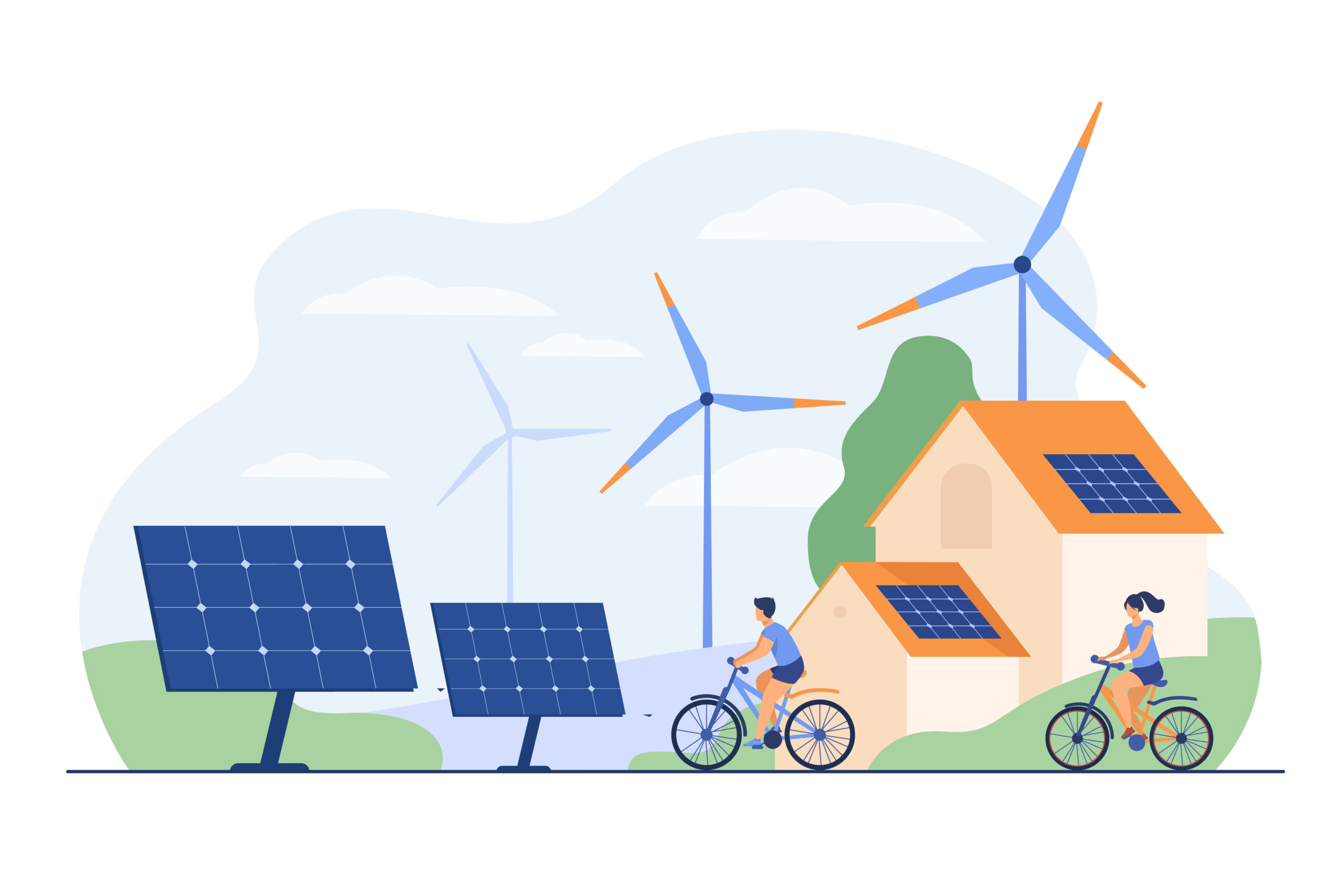In today’s era of advancing technology and growing environmental consciousness, solar power has emerged as a formidable force in the renewable energy landscape. At the heart of every solar energy system lies a crucial component known as a solar inverter. This device plays a pivotal role in converting the direct current (DC) generated by solar panels into usable alternating current (AC) electricity. In this article, we delve into the intricacies of solar inverters, exploring their functions, types, and benefits, as we unveil the marvels of this vital link in the solar power chain.
The Role and Function of Solar Inverter:
Solar inverters act as the bridge that connects solar panels and the electrical grid, ensuring the efficient utilization of solar energy. Their primary function is the conversion of DC electricity, produced by solar panels from sunlight, into AC electricity that can power homes, businesses, and even the larger electrical grid. This transformation is essential because most of our electrical devices operate on AC power.
Solar inverters perform various critical tasks to ensure optimal energy conversion. Firstly, they maximize power output by employing Maximum Power Point Tracking (MPPT) algorithms that extract the highest amount of energy from the solar panels. Secondly, they synchronize the AC output with the grid’s voltage and frequency to enable seamless integration. Additionally, inverters monitor the system’s performance, detecting and responding to any faults or disruptions, thus ensuring operational reliability.
Types of Solar Inverter:
String Inverters:
String inverters, also known as central inverters, are the most common type in residential and commercial solar installations. They are connected to multiple solar panels wired together in series, forming a string. These inverters are cost-effective, simple to install, and efficient when operating under uniform conditions. However, they are susceptible to reduced performance if a single panel experiences shading or malfunctions.
Microinverters:
Microinverters are small, independent inverters attached to each individual solar panel. They offer several advantages over string inverters, including increased energy production, enhanced system monitoring, and improved reliability. Since each panel operates independently, microinverters eliminate the issue of reduced performance caused by shading or panel-level failures. However, they tend to be more expensive and require additional installation effort.
Power Optimizers:
Power optimizers, like microinverters, are module-level power electronics that are connected to each solar panel. They optimize the DC power generated by the panels before transmitting it to a central inverter. Power optimizers offer benefits such as panel-level monitoring, shade tolerance, and increased system efficiency. However, they still rely on a central inverter, making them less efficient than microinverters in terms of energy production.
Advantages of Solar Inverter:
Energy Efficiency:
Solar inverters maximize the energy harvested from solar panels by utilizing MPPT algorithms and tracking the optimal power point. This results in increased energy production and higher system efficiency, translating into more significant savings on electricity bills and a reduced carbon footprint.
Grid Integration:
Solar inverters facilitate the seamless integration of solar power into the electrical grid. By synchronizing the AC output with the grid’s voltage and frequency, they ensure that excess energy is fed back into the grid, allowing users to earn credits or receive compensation for the surplus electricity generated.
System Monitoring and Fault Detection:
Solar inverters constantly monitor the performance of the solar energy system, providing real-time data on energy production, system health, and potential issues. This enables prompt detection of faults, such as panel malfunctions or shading, allowing for timely maintenance and maximizing system uptime.

Scalability and Flexibility:
Solar inverters accommodate the scalability and flexibility needs of solar installations. Whether it’s a small residential system or a large-scale commercial project, inverters can be configured and expanded to meet specific energy requirements.
Solar inverter Scalability and Flexibility:
Solar inverters accommodate the scalability and flexibility needs of solar installations. Whether it’s a small residential system or a large-scale commercial project, inverters can be configured and expanded to meet specific energy requirements. This adaptability makes solar inverters a versatile solution that can grow alongside the energy needs of the user. Additional solar panels can be easily added to the system, and the inverter can be upgraded or replaced to handle the increased capacity. This scalability allows for future expansion and the potential to generate even more clean energy.
Durability and Longevity:
Solar inverters are designed to withstand various environmental conditions and provide reliable performance over an extended period. They are built with high-quality materials and undergo rigorous testing to ensure durability and longevity. Inverters often come with warranties that guarantee their performance for a specific period, providing users with peace of mind and protection against any potential manufacturing defects.
Enhanced Safety Features:
Solar inverter incorporate safety features to protect both the system and the users. They have built-in mechanisms that detect and respond to abnormalities in voltage, temperature, and current, preventing potential electrical hazards. In the event of a grid outage, some inverters also offer anti-islanding protection, which automatically shuts down the system to ensure the safety of utility workers repairing the grid.
Reduction in Electricity Bills:
Solar inverters, by efficiently converting solar energy into usable electricity, help reduce dependence on grid power. This results in significant savings on electricity bills, especially when combined with net metering programs that allow excess solar energy to be fed back into the grid for credits. Over time, these savings can offset the initial investment in the solar energy system and contribute to long-term financial benefits.
Environmental Benefits:
One of the most significant advantages of solar inverters, in combination with solar panels, is their positive impact on the environment. Solar power is a clean, renewable energy source that produces zero greenhouse gas emissions during operation. By harnessing solar energy and converting it into electricity, solar inverters contribute to reducing carbon emissions and combating climate change. They play a crucial role in transitioning to a more sustainable energy future.
Conclusion:
Solar inverter are the unsung heroes of solar energy systems, playing a vital role in converting the sun’s energy into usable electricity. As the renewable energy revolution gains momentum, the demand for efficient and reliable solar inverters continues to rise. By harnessing the power of the sun and seamlessly integrating solar energy into the electrical grid, these devices enable us to embrace a greener, more sustainable future. With ongoing advancements in technology, solar inverters will undoubtedly continue to evolve, driving the transition to a cleaner, brighter world.
